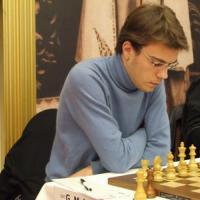
French Rubinstein by GM Magesh and GM Arun
This week we shall see the French Defence Rubinstein Variation. The speciality of this variation is that it can be used both against the Tarrasch Variation as well as the Winawer Variation. Black immediately reduces the tention in the centre and maintains a solid pawn structure throughout.
In recent times this variation has gotten the attention of many strong Grandmasters and has become one of the solid systems against 1.e4. Some people consider this variation to be passive for Black, but in reality it is not so easy for white to get a convincing edge. Black's idea is simple, he maintains a healthy pawn structure, exchanges the pieces and the endgame is pleasant for Black. This is the outline of the Rubinstein system Black is aiming for.
Our first game is between Vachier-Lagrave Maxime-Meier,G World Cup Khanty Mansiysk 2009. Black managed to equalize pretty easily and we can even say that he was never really in any trouble.
As we said in the introduction Black maintained a healthy pawn chain. Exchanged pieces and managed to draw the endgame without any difficulty. Our next game is Anand-Bareev Monte Carlo 2004. In the beginning it was looking dangerous for Black in this game since White completed his development pretty fast but Black never completed his development. But still his position was pretty solid and soon he managed to create enough counterplay and again he was not in danger.
The endgame with a 3:3 pawn (queenside: kingside) structure for White and a 4:2 for Black often occurs in this system and is considered to be slightly favourable for Black under normal circumstances. That is the endgame Black is aiming for and the exchange of pieces should be done without tampering with the pawn structure. It is good to have a minor piece and a Rook in such positions to play for a win. Our next game is between Judit Polgar and Loek Van Wely, from Hoogeveen 2001. This game was much more complicated than the previous ones but again Black had a good game.





